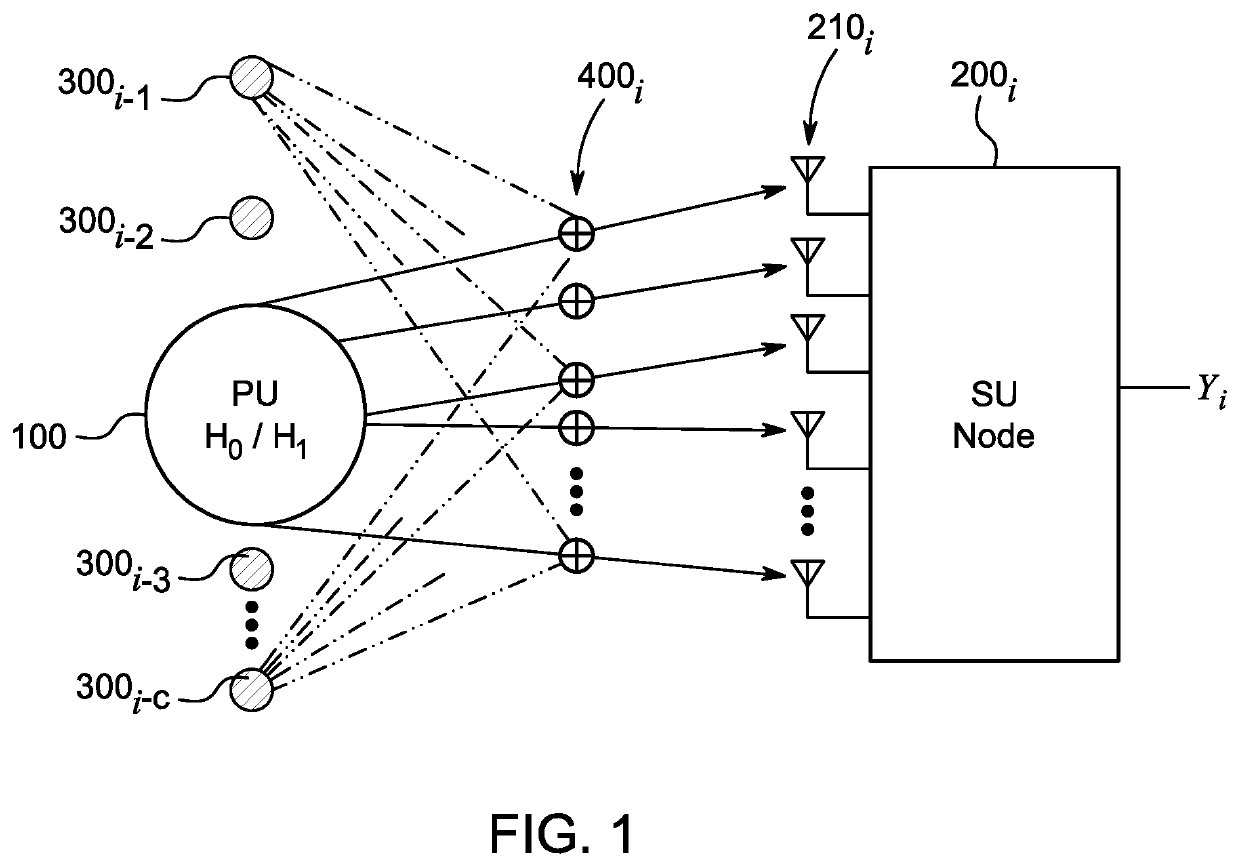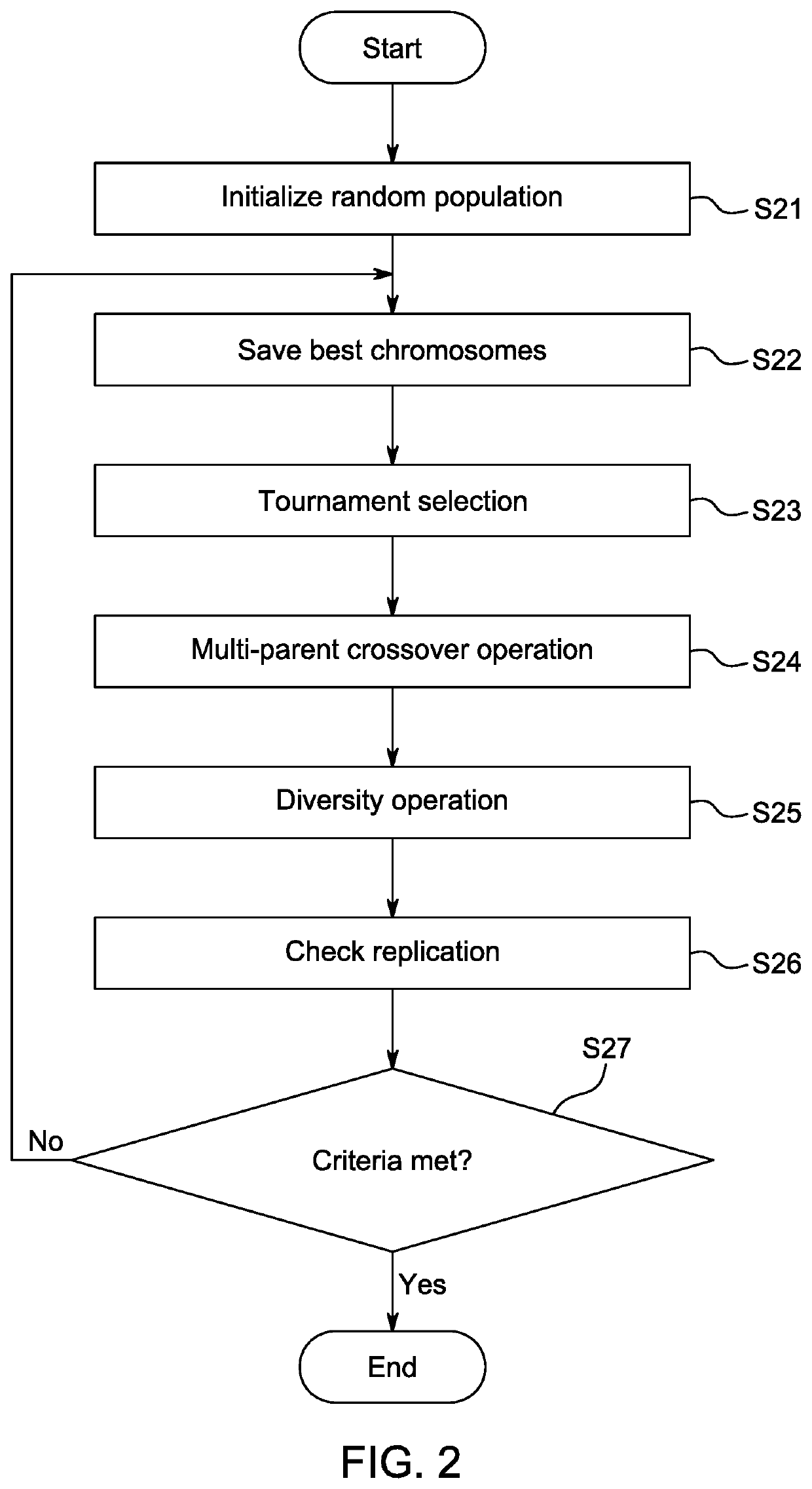Method for spectrum sensing unoccupied frequency
a spectrum sensing and unoccupied frequency technology, applied in the field of multi-antenna-based spectrum sensing solutions, can solve the problems of difficulty in differentiation between interference and noise, pre-existing fixed spectrum assignment policies have become less efficient, and energy detector-based spectrum sensing faces challenges
- Summary
- Abstract
- Description
- Claims
- Application Information
AI Technical Summary
Benefits of technology
Problems solved by technology
Method used
Image
Examples
Embodiment Construction
[0028]In the drawings, like reference numerals designate identical or corresponding parts throughout the several views. Further, as used herein, the words “a,”“an” and the like generally carry a meaning of “one or more,” unless stated otherwise. The drawings are generally drawn to scale unless specified otherwise or illustrating schematic structures or flowcharts.
[0029]Furthermore, the terms “approximately,”“approximate,”“about,” and similar terms generally refer to ranges that include the identified value within a margin of 20%, 10%, or preferably 5%, and any values therebetween.
[0030]Most conventional spectrum sensing techniques assume only additive noise and ignore the effect of co-channel interference. Moreover, in deriving the probability of detection and probability of false alarm, a Gaussian assumption is employed for the received statistics at each node of a cognitive radio network. However, such an assumption is not always true in real practice.
[0031]To address these issues...
PUM
 Login to View More
Login to View More Abstract
Description
Claims
Application Information
 Login to View More
Login to View More - R&D
- Intellectual Property
- Life Sciences
- Materials
- Tech Scout
- Unparalleled Data Quality
- Higher Quality Content
- 60% Fewer Hallucinations
Browse by: Latest US Patents, China's latest patents, Technical Efficacy Thesaurus, Application Domain, Technology Topic, Popular Technical Reports.
© 2025 PatSnap. All rights reserved.Legal|Privacy policy|Modern Slavery Act Transparency Statement|Sitemap|About US| Contact US: help@patsnap.com



